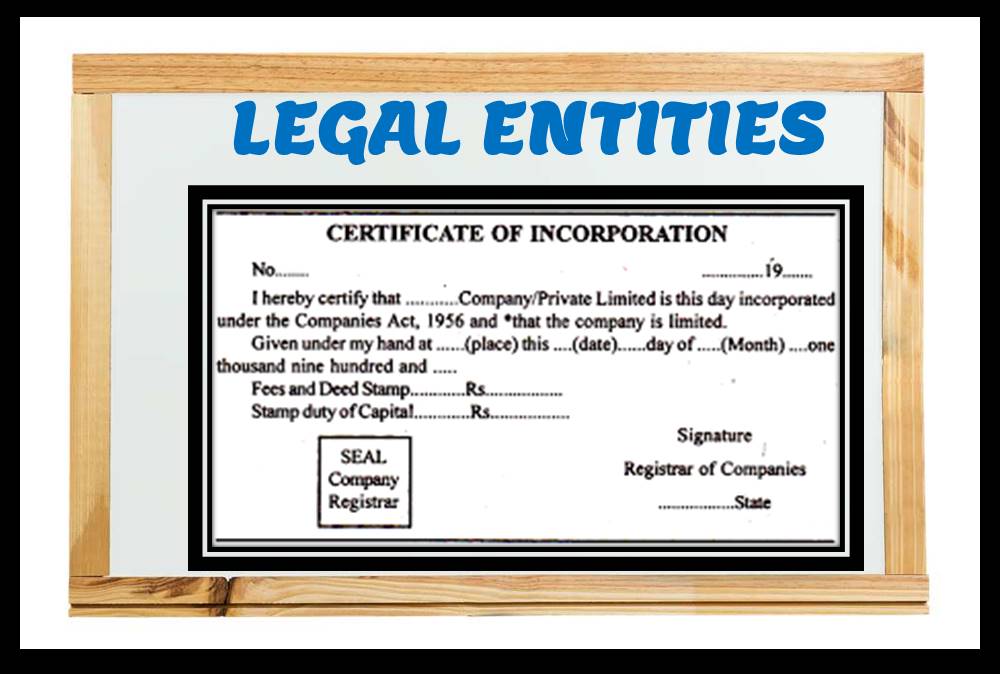- Home
- Business Processes
- Industry Knowledge
- Aerospace Industry
- Automotive Industry
- Banking Domain
- BFSI Industry
- Consumer/ FMCG Industry
- Chemicals Industry
- Engineering & Construction
- Energy Industry
- Education Domain
- Finance Domain
- Hospitality Domain
- Healthcare Industry
- Insurance Domain
- Retail Industry
- Travel and Tourism Domain
- Telecom Industry
- Leadership Skills
- eLearning
- Home
- Domain Knowledge
- General Ledger
- Concept of Legal Entity
Concept of Legal Entity
A legal entity is an artificial person having separate legal standing in the eyes of law. A Legal entity represents a legal company for which you prepare fiscal or tax reports. A legal entity is any company or organization that has legal rights and responsibilities, including tax filings.
One of the most frequently used terms in the world of compliance and governance is that of the legal entity. But what is the meaning of a legal entity, and why is it so important for finance, compliance, legal and operational professional?
As explained before, A business is entitled enter into commercial transactions due to its charter in the legal system. Commercial groups exist through corporate law. Units in the legal structure of a group are individual companies that share common ownership and control. In a public group, a company is owned by the public through shares sold on a stock market. In a private group, they are held by a privately held holding company. In other organizations, the legal entities are partnerships, funds, or government agencies. A legally recognized entity can own and trade assets and employ people; while an entity without legal recognition cannot. When granted these privileges, legal entities are also assigned responsibilities to account for themselves to the public (statutory reporting and external reporting), comply with legislation and regulations, and pay income or transaction taxes.
What Is a Legal Entity?
A legal entity is an artificial person having separate legal standing in the eyes of law. A Legal entity represents a legal company for which you prepare fiscal or tax reports. A legal entity is any company or organization that has legal rights and responsibilities, including tax filings. It is a business that can enter into contracts either as a vendor or a supplier and can sue or be sued in a court of law. A legal entity can enter into contracts and assume the obligations of those contracts, can borrow and pay debts, can file suits and be named by other parties in suits, and can be held to account for the results of those lawsuits.
Features of Legal Entities
- Legal Entity is also known as GRE - Government Reporting Entity. Some of the attributes associated with legal entity are:
Structure
- A Legal entity is identified through the registration with Legal Authority.
- You assign tax identifiers and other Legal entity information to legal entity
- Legal Entity possesses separate existence for tax purposes. Legal Entities pay the taxes and therefore need tax registrations.
- Legal entities such as parent companies own or control subsidiaries. A large corporation can own many legal entities as its subsidiaries.
Rights & Obligations
- A legal entity has legal capacity to enter into agreements or contracts, assume obligations, incur and pay debts, sue and be sued in its own right, and to be held responsible for its actions.
- Trade between Legal Entities belonging to same corporate is intercompany and must be supported by adequate legal documentation.
- Legal Entities own the money and bank accounts
Compliance & Accounting
- Legal Entities comply with whatever needs compliance – The “Legal” in word “Legal Entity”. This includes recording of all relevant transactions and generating all supporting documents required for financial statements.
- Legal Entities file the accounts and take care of accounting. Legal Entity is the organizational unit for Financial Accounting for which a complete self-contained set of accounts needs to be drawn up for purposes of external reporting.
- Accounting Books must balance at Legal Entity level. This is an entity for which you prepare a trial balance.
Summary
Legal entities are structured in a way that allows for a greater degree of protection for strictly personal assets from lawsuits and regulatory penalties. Each type of entity provides a different set of protections and tax burdens. Legal entity codes are not standardized, despite the globalized economic world in which we live, due to the laws and regulations that govern legal entities fluctuate drastically across jurisdictions.
Related Links
You May Also Like
-
There are two commonly used methods of accounting - Cash Basis and the Accruals Basis. Understand the difference between accruals and reversals. Recap the earlier discussion we had on accruals and reversals and see the comparison between these two different but related accounting concepts. Understand how the action of accruing results in reversals subsequently in the accounting cycle.
-
In this article we will discuss various types of "Management Entities". Various types of operational units, are created by management, to effectively run, manage and control their business. Different types of functional units, and divisional units, are widely used across industry.
-
GL - Review & Approve Journals
Review and Approval mechanisms ensure that the accounting transaction is reasonable, necessary, and comply with applicable policies. Understand why we need review and approval processes, what are they, and how they are performed in automated general ledger systems. Learn the benefits of having journal approval mechanisms in place.
-
Operational Structures in Business
Large organizations grow through subsidiaries, joint ventures, multiple divisions and departments along with mergers and acquisitions. Leaders of these organizations typically want to analyze the business based on operational structures such as industries, functions, consumers, or product lines.
-
Understand what we mean by GAAP to STAT adjustments. This article discusses the different standards that are used for multiple representations of the financial results for global organizations. Understand the meaning of US GAAP, Local GAAP, STAT, IFRS, and STAT. Finally, understand why accounting differences arise and how they are adjusted for different financial representations.
-
Explore the concept of journal reversals and understand the business scenarios in which users may need to reverse the accounting entries that have been already entered into the system. Understand the common sources of errors resulting in the reversal of entries and learn how to correct them. Discuss the reversal of adjustment entries and the reversal functionalities in ERPs.
-
Internally, an organization can be structured in many different ways, depending on their objectives. The internal structure of an organization will determine the modes in which it operates and performs. Organizational structure allows the expressed allocation of responsibilities for different functions and processes to different entities such as the branch, department, workgroup and individual.
-
A legal entity is an artificial person having separate legal standing in the eyes of law. A Legal entity represents a legal company for which you prepare fiscal or tax reports. A legal entity is any company or organization that has legal rights and responsibilities, including tax filings.
-
After reading this article the learner should be able to understand the meaning of intercompany and different types of intercompany transactions that can occur. Understand why intercompany transactions are addressed when preparing consolidated financial statements, differentiate between upstream and downstream intercompany transactions, and understand the concept of intercompany reconciliations.
-
In this article we will help you understand the double-entry accounting system and state the accounting equation and define each element of the equation. Then we will describe and illustrate how business transactions can be recorded in terms of the resulting change in the elements of the accounting equation.
Explore Our Free Training Articles or
Sign Up to Start With Our eLearning Courses

About Us
Learning
© 2023 TechnoFunc, All Rights Reserved











